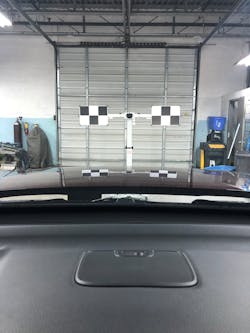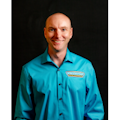
Technicians take note: Advanced driver assistance systems (ADAS) are here, more are coming, and more still needs to come. There is significant benefit to the general population with increased implementation and increased ability of these assistance systems. By all accounts, these systems will result in a decrease in the quantity of collisions, and hopefully reduce vehicle-related casualties. This will come with an increase in the cost and complexity of repairs, and it is vital to understand how crucial accuracy is in every aspect of the repair.
As humans, we desire to understand. The question of “why?” is unquestionably important now. In meetings with my team and/or with sublet vendors I like to play the part of an unwise, uneducated individual. I like to ask “why?” a lot. I want them to give me explanations beyond the textbook answers they simply memorized and are repeating. It is important that we all think for ourselves and seek answers; neither this article nor any other article can answer all of the “whys” we are going to have. What I am hoping for is that I can give some foundation that will allow for further answers.
The elements of a proper repair
When we dig deeper into the actual implementation of repairs on ADAS, there is a huge gap between the current status quo and a proper repair. We are asked to spend more time performing operations that are very difficult to accomplish. It is also extremely difficult to quantify the time required and is challenging to be fairly compensated for them. We already face the obstacle of too much to do in too little time, but now we are having to find more time to spend. Not only are we asked to spend time we don’t have to research these repairs, but that research may lead to additional items that require more time and more expenses to sift through. Along with the time and expenses needed, these operations demand more understanding to accomplish and subsequently teach to others, and they require more knowledge to negotiate.
The hurdles for shop estimators are three-tiered. First, they have to believe in the need to write for the operations; secondly, they then have to ensure the technicians understand and will perform the operation; and lastly, they have to be knowledgeable enough to negotiate payment for it. Many times, technicians are taking on the responsibility of the research aspect, knowing that they are held responsible for the repairs. For the technicians, their burden includes having to negotiate with their managers, teach their fellow teammates, and overall raise awareness. Knowledgeable insurance adjusters have their own struggles; they face the difficulty of getting shops they work with to comprehend and acknowledge the need which will likely present enormous adversity.
As we continue to explore new territory, the foundation of accuracy will remain and the demand to do it just as the OEM specifies will be increasingly imperative. Currently, we know that most of these systems work in a similar fashion and so far, all of the new systems continue to work in the same way. As we all figure out how to create a process that works, we must also consider that it is feasible to believe that the way these systems function will evolve, just as the ability of these systems evolve. That may make some of the repairs easier and it may make some of the repairs more difficult, but as I said, the foundation of accuracy will be critical.
One step that is nearly always required to properly calibrate ADAS is that suspension and body alignment must be correct first. Those steps may not be listed on all the repair procedures for the ADAS calibration. The lack of alignment verification may be due to the assumption, made by the manufacturers, that the calibration is being done on an undamaged vehicle. Another reason why these may not be in the repair procedure for the ADAS calibration is because many of the OEMs have special procedures that must be performed on every repair. “Inspections required after a collision” is a prerequisite for every repair procedure. Many of those state that you must “perform four wheel thrust alignment and/or measure unibody or frame for structural alignment” after a collision. So why is this consideration so important?
In order for all the systems to work, all systems have to be in alignment. The body must be straight; the tires must be straight to the body, and the sensors must be calibrated to the same straight line. If the alignment is straight but the body is sitting crooked, that will cause a problem. Some sensors are calibrated to the direction of travel while others are calibrated to the vehicle center line. Looking at and understanding how a car interacts with itself can oftentimes answer the “why” behind one aspect and thus give you the foundation to understand the “why” behind another, which not only answers questions, but leads to an understanding of proper repair procedures.
Let’s assume the wheel alignment is perfect, steering wheel sits dead level when driving straight, and the steering angle sensor is calibrated to zero. Now let’s imagine that the front structure is askew 5mm to the left. We adjusted the gaps, and the fender gap is good to the left door well within factory tolerances, hood gap is good, bumper looks good, our technician is proud of a job well done and doesn’t think twice that the adjustments are maxed out. Afterall, if the OEM didn’t want you to use that much adjustment room, why would they have made the part with that much? We follow the OEM repair procedures for the ADAS calibration, hang a plumb bob off the front emblem and another off the rear, shoot a laser to intersect both, and mark the ground. Targets are set at the exact location that is required.
All measurements are checked and double-checked. The location of that target is square to the center line, but remember, that center line is unknowingly off 5mm to the left. Now the sensors aren’t 90 degrees to the back half of the body, and they are certainly not 90 degrees to the direction of travel (or if it’s a front camera calibration, it's not perfectly parallel to the direction of travel). Instead, whatever target we place will be off just slightly. At 100” (distance away for many targets) it may just be 1” off; it’s only off by 1 percent, but these sensors read 100 yards, which means that 1” turns into one yard. One yard off could miss seeing an object all together, and thus the system won’t operate correctly. The thrust alignment can create the same issue; a sensor can be aligned to a straight body, but a car going down the road just 1 degree off, due to a thrust alignment issue, at 100 yards is mathematically off nearly one yard.
Other factors affecting calibration
Many calibration procedures require that all the tires are checked and set to the correct pressure, are the correct size, that the car isn’t overloaded with personal items, and that the fuel load is at a specific level. Why? The angle of the height of the car front to back dictates where the sensor will look up and down. When the target is placed at the exact right distance from the sensor, at the exact right height, the computer is expecting the angle of the car to be exactly right. If the front tires are low, or the fuel load to low and those items are corrected at a later date, the car will have an angle that the sensor cannot compensate for. The sensors do have a range to operate in and it's just large enough for when all things are perfect. Alter that range by not checking all the boxes before performing the calibration and you may alter the vehicle’s angle by a degree or more. That could mean the sensor is looking at the sky or at the ground instead of at the object directly in front of it. Again, the same 1 degree at 100 yards translates to 2.5’ of misalignment. As the sensor is looking for the center of a car at 100 yards, 2.5’ of height misalignment could have it looking at the ground, or right above a normal size sedan.
Vehicles have a requirement that calibrations are performed with a bumper R&I or a windshield R&I, not just after a replacement or removal of the sensor itself but after simply taking the components off directly in front of the sensors, why? When the sensors are looking through a bumper, an emblem, or the windshield it is like a human looking through a set of glasses. Glass lenses are cut in such a way that the focal point of the lens is in line with the center of the eye. Moving the lenses one direction or another can alter the lens’s shape and thus change the optics of the lens. Think of a scope on a gun. If the scope is altered by a fraction of a millimeter on the gun barrel then at 100 yards the target will be missed. Sighting in a scope requires that the target is hit dead on the bullseye at close range in order to ensure that at maximum distance the target can still be hit. Altering the optics for the sensor less than an inch in front of it can cause the sensor to believe that center is in just a slightly different spot. The only way to ensure that its center is correct is to re-calibrate.
Keeping with the changes
Bottom line, we are at a crossroads with the current status quo. Manufacturers are rightly forging ahead with assistance packages to avoid a crash rather than trying to simply make a vehicle safer during a crash. However, they are lacking in providing methods to ensure all those systems are working correctly. The only way to ensure they will perform correctly after a repair is to properly calibrate the system. There is a huge need to follow procedures to be sure vehicles are being properly handled, repaired, and aligned. There is also a huge need for there to be more understanding between shops and insurance companies, and for all parties to have more knowledge regarding the entire process and the functionality of the vehicles that are being produced with these systems. As we all move into new territory in this industry, it is going to be imperative that we all find a way to work together to ensure that vehicles are safe, all parties are being fairly compensated and educated, and that we are able to truly understand the “why” behind the questions.
[Bio] Sean Guthrie is the director of operations for Car Crafters Collision Centers in Albuquerque, New Mexico. Sean oversees the seven locations handling their DRP and OEM relationships. He is I-CAR platinum, ASE certified, multiple OEM-trained, and sits on two advisory boards.
https://www.searchautoparts.com/abrn/author/sean-guthrie
To read the full article, go to [BASE ID]
[Products related to this repair]
About the Author

Sean Guthrie
Sean Guthrie is the director of operations for Car Crafters Collision Centers in Albuquerque, New Mexico. Sean oversees the seven locations handling their DRP and OEM relationships. He is I-CAR platinum, ASE certified, multiple OEM-trained, and sits on two advisory boards.